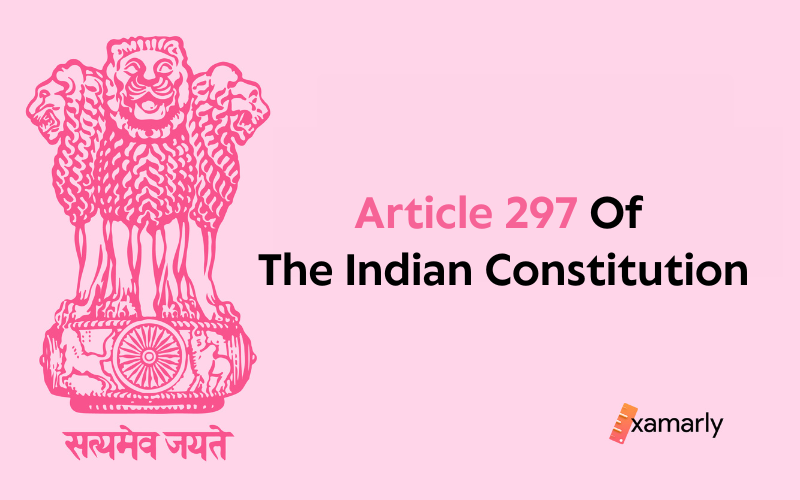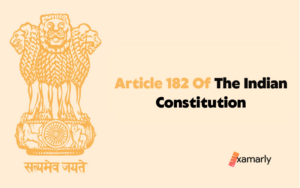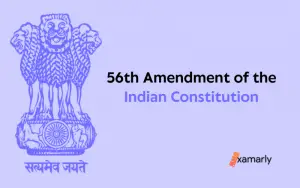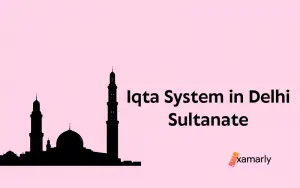Article 297 of the Indian Constitution talks about all the valuable assets and properties that reside under the territorial boundaries of Indian waters and land.
Let us dig deep into Article 297 of the Indian Constitution and get to know everything that has been said in the Article.
Article 297 Of The Indian Constitution – In Detail
To fully grasp the scope of Article 297 of the Indian Constitution, we will examine its many clauses and subclauses in detail.
Clause 1 – As it is & Explained
297. Things of value within territorial waters or continental shelf and resources of the exclusive economic zone to vest in the Union
(1) All lands, minerals and other things of value underlying the ocean within the territorial waters, or the continental shelf, or the exclusive economic zone, of India shall vest in the Union and be held for the purposes of the Union
According to the first clause of Article 297 of the Indian Constitution all land, minerals, and other valuable items inside India’s territorial waters, continental shelf, and exclusive economic zone shall become the property of the Union and be kept for Central Government’s purposes.
Clause 2 – As it is & Explained
(2) All other resources of the exclusive economic zone of India shall also vest in the Union and be held for the purposes of the Union
The second clause of Article 297 of the Indian Constitution says that all other resources in India’s exclusive economic zone belong to the Union and are used for Union purposes.
Clause 3 – As it is & Explained
(3) The limits of the territorial waters, the continental shelf, the exclusive economic zone, and other maritime zones, of India shall be such as may be specified, from time to time, by or under any law made by Parliament
According to the third clause of Article 297 of the Indian Constitution, any law made by Parliament from time to time will set the boundaries of India’s territorial waters, continental shelf, exclusive economic zone, and other maritime zones.
You Might Also Like – Article 293 Of The Indian Constitution
Summing Up
We can conclude from Article 297 of the Indian Constitution that all lands, minerals, and other valuable resources found beneath the ocean within India’s territorial waters, continental shelf, or exclusive economic zone will vest (become the property of) the Union (presumably the central government or a national entity).
It also concludes that all other resources within the exclusive economic zone of India will vest in the Union. Finally, it mentions that the limits of India’s territorial waters, continental shelf, exclusive economic zone, and other maritime zones may be specified by law made by the Parliament of India.
FAQs
What is the purpose of Article 297?
Article 297 of the Indian Constitution establishes that all lands, minerals, and other things of value beneath the ocean within India’s territorial waters, continental shelf, or exclusive economic zone, as well as all other resources within the exclusive economic zone, will vest in the Union (the central government or a national entity) and be held for the purposes of the Union.
What are territorial waters, continental shelf, and exclusive economic zone?
Territorial waters are a belt of sea extending out from the coast of a country over which the country has sovereignty. The continental shelf is a shallow part of the ocean floor that extends from the coast of a continent and is usually submerged under a relatively shallow depth of water. The exclusive economic zone (EEZ) is a maritime zone over which a country has special rights to explore, exploit, conserve, and manage the natural resources, whether living or non-living, of the seabed and subsoil.
What are the limits of India’s territorial waters, continental shelf, and exclusive economic zone?
The limits of India’s territorial waters, continental shelf, and exclusive economic zone are specified by law made by the Parliament of India. These limits may be revised or updated from time to time as necessary.
What is the significance of Article 297?
Article 297 of the Indian Constitution is important because it says who owns the resources in certain Indian maritime zones and how they can be used. It ensures that these resources are used for the benefit of the Union and are managed and conserved in an appropriate manner.






